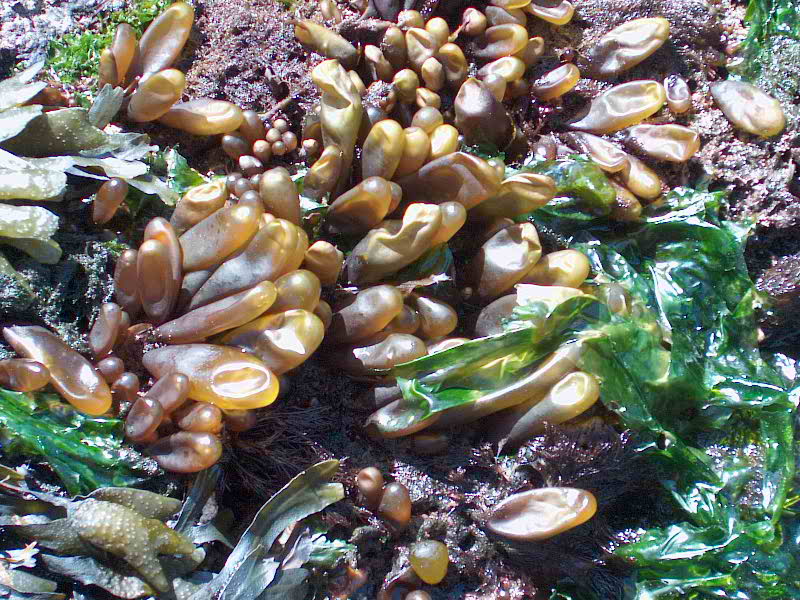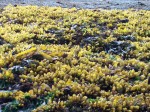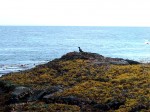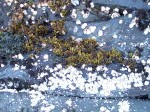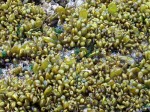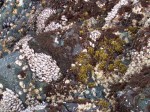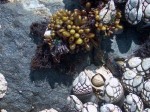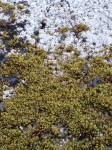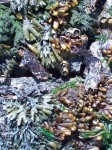Race Rocks Digital Herbarium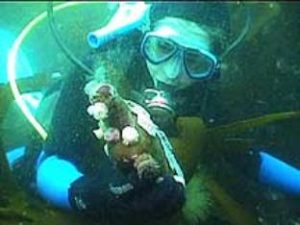
This Digital Herbarium was created by Ryan M.J. Murphy after his stay at the Race Rocks Marine Protected Area, in British Columbia. This digital collection features images of over 40 species of marine algae found within the MPA, links to online Quicktime movies, a glossary, and classification information. Not all species are identified. For these and other Macroalgae species, now see the Race Rocks Taxonomy.
The contents of this project have now been moved to the Race Rocks Taxonomy
Site Information
Race Rocks
Race Rocks in an archipelago situated at 48o17’45”N, 123o31’50”W, south of Vancouver Island in the Strait of Juan de Fuca. A tidal range that exceeds 3m yields a large intertidal community that is constantly battered by large waves and subject to currents up to 6 knots. The islands are surrounded by forests of Nereocystis luetkeana in the summer months, under which a highly developed subtidal community exists.
Study Features
Ryan Murphy used digital video equipment from Lester B. Pearson College and an hp digital camera to record the materials presented in this herbarium. As Race Rocks is a Marine Protected Area, no live samples could be taken, thus necessitating this digital collection. The author hopes that the benefits of this collection far outweigh the benefits of having brittle preserved samples stored away from public use.
Images and video were collected in the summer of 2002 with the help of Pearson College student Joe Downham. Identification was completed by Ryan, Anne K. Salomon of the University of Washington, and Garry Fletcher of L.B. Pearson College.
Funding was provided to this project by the Leadership Mount Allison Academic Initiative.
Management
Race Rocks was declared a Marine Protected Area designate in October 2000. It has been managed by Lester B. Pearson College since 1997.
Favourite Links
https://www.racerocks.ca
http://www.mta.ca/~iehrman/jalgaeholics/volume1number1.htm ( now not available)
Contact Information
Ryan Murphy:
Garry Fletcher:
Project Supported By
Lester B. Pearson College of the Pacific
Leadership Mount Allison
Dr. Irena Kaczmarska-Ehrmann
Anne K. Salomon
Garry Fletcher
Joe Downham
Bibliography
Scagel, Robert F. (1972) Guide to Common Seaweeds of British Columbia. K.M. MacDonald Printing, British Columbia.

